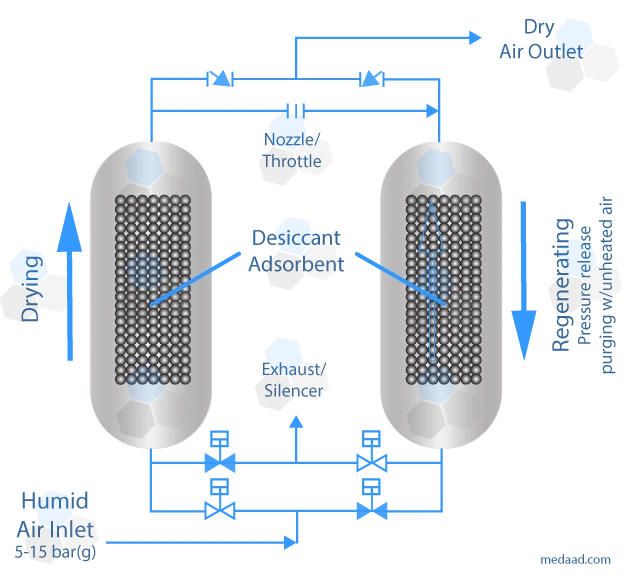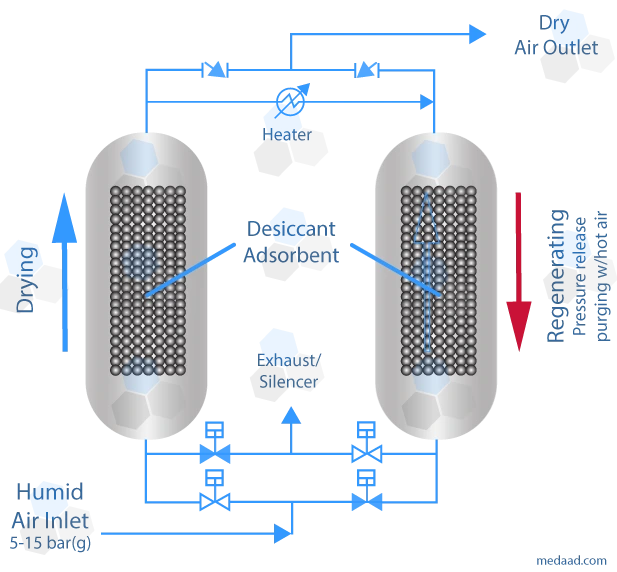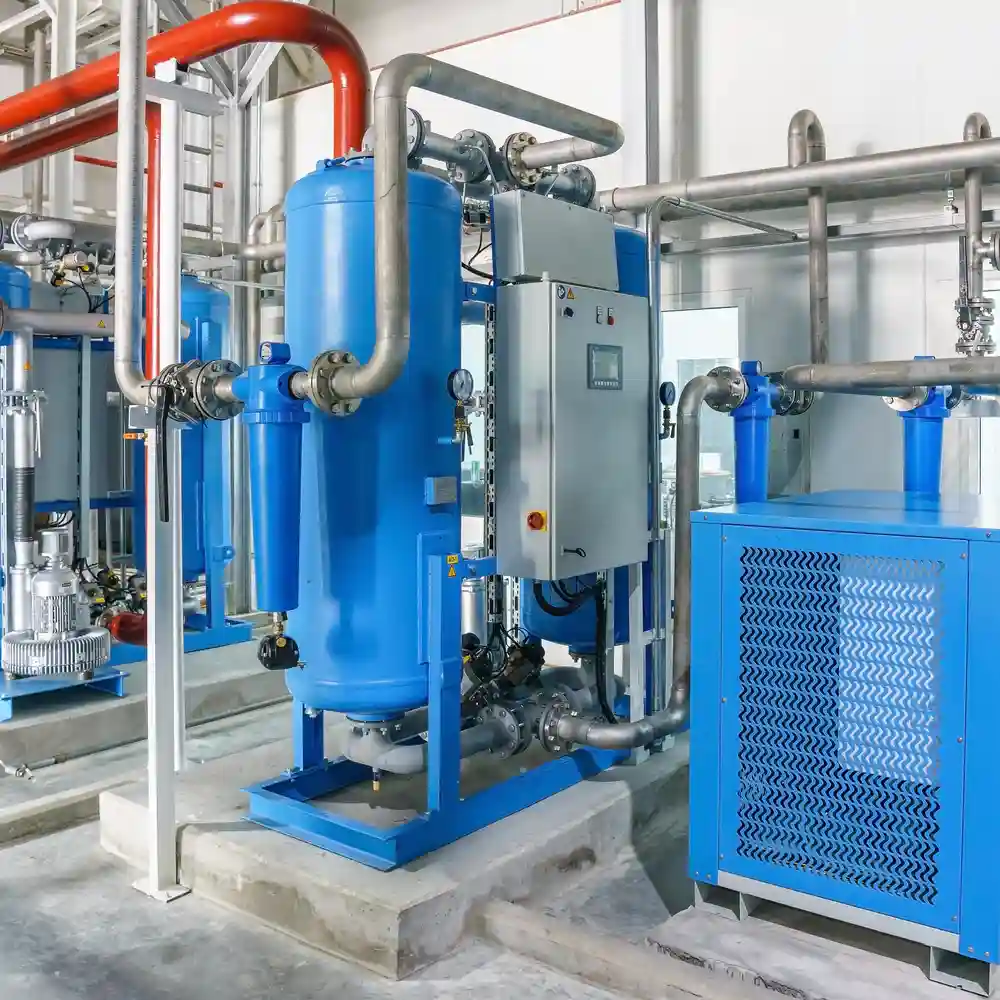Compressed Air Dryers
Home - Compressed Air Dryers
Table of Content
- What is a Compressed Air Dryer?
- Types of Adsorbents in Air Dryers
2.1 Molecular Sieve
2.2 Activated Alumina
2.3 Silica Gel - Air Dryer Regeneration – PSA vs. TSA
3.1 Pressure Swing Adsorption (PSA) Air Dryer
3.2 Thermal Swing Adsorption (TSA) Air Dryer - Air Dewpoint and Efficiency
- Contact Us to Know More
1. What is a Compressed Air Dryer?
Compressed air dryers remove moisture and impurities from compressed air using adsorbent materials like Molecular Sieves, Activated Alumina, or Silica Gel. They prevent corrosion, product spoilage, and equipment damage by eliminating moisture, ensuring reliable and safe operations in various industrial applications.
Instrument Air Dryers typically employ two adsorber towers in cycles comprising three key steps: adsorption, equalization, and regeneration. During adsorption, humid compressed air passes through the dryer, and the adsorbent material selectively traps moisture. Equalization stabilizes the pressure between the two adsorber towers, and regeneration involves removing moisture from the adsorbent material through pressure release or purging with heated or unheated air. This cycle guarantees a continuous supply of dry compressed air, facilitating efficient and reliable system operation.
2. Types of Adsorbents in Air Dryers
2.1 Molecular Sieve: Molecular Sieve exhibits high efficiency in moisture removal, resulting in an extra low dewpoint. Molecular Sieve is favored in applications that require extremely dry compressed air.
2.2 Activated Alumina: Activated Alumina strikes a balance between effectiveness and capacity. Activated Alumina is commonly used in instrument air dryers and industrial gas treatment applications.
2.3 Silica Gel: Silica Gel has a height-weight percentage capacity for adsorbing water vapor. Silica Gel is often chosen for applications that prioritize a high capacity to handle large volumes of moisture.
3. Air Dryer Regeneration – PSA vs. TSA:
The following types of air dryers regeneration technologies are available to you to use in your air dryer:
3.1 Pressure Swing Adsorption (PSA) Air Dryer: Pressure Swing Adsorption (PSA) air-drying involves passing the air over an adsorbent material, such as Activated Alumina or Molecular Sieves, which selectively adsorbs moisture. By changing the tower pressure, the adsorbent material releases the captured moisture, ensuring its regeneration for a continuous dry air supply.

3.2 Thermal Swing Adsorption (TSA) Air Dryer: Thermal Swing Adsorption (TSA) utilizes heat to regenerate the adsorbent material, releasing the adsorbed moisture and impurities from the saturated bed. By alternating between adsorption and regeneration cycles, TSA technology ensures consistent dry and clean compressed air delivery.

4. Air Dewpoint and Efficiency
Dewpoint is the term used to describe the temperature at which condensation will occur, and the water removal efficiency of a dryer is expressed as a pressure dewpoint (written as a temperature). Desiccant dryers are extremely efficient and typically provide pressure dewpoints of -40°C. For water vapor to condense into a liquid, the air temperature must drop below -40°C.
Typically, a pressure dewpoint of -40°C is used in most applications as compressed air with a dewpoint below -26°C will prevent corrosion and inhibit micro-organisms’ growth within the compressed air system. Desiccants (regenerative air dryers) can be purchased in beads/spheres or pellets/extrudates shapes.
5. Contact Us to Know More
Contact Us today and experience the benefits of energy efficiency, corrosion prevention, and the best air quality with our compact and reliable compressed air dryer solutions.
Contact Us Today
